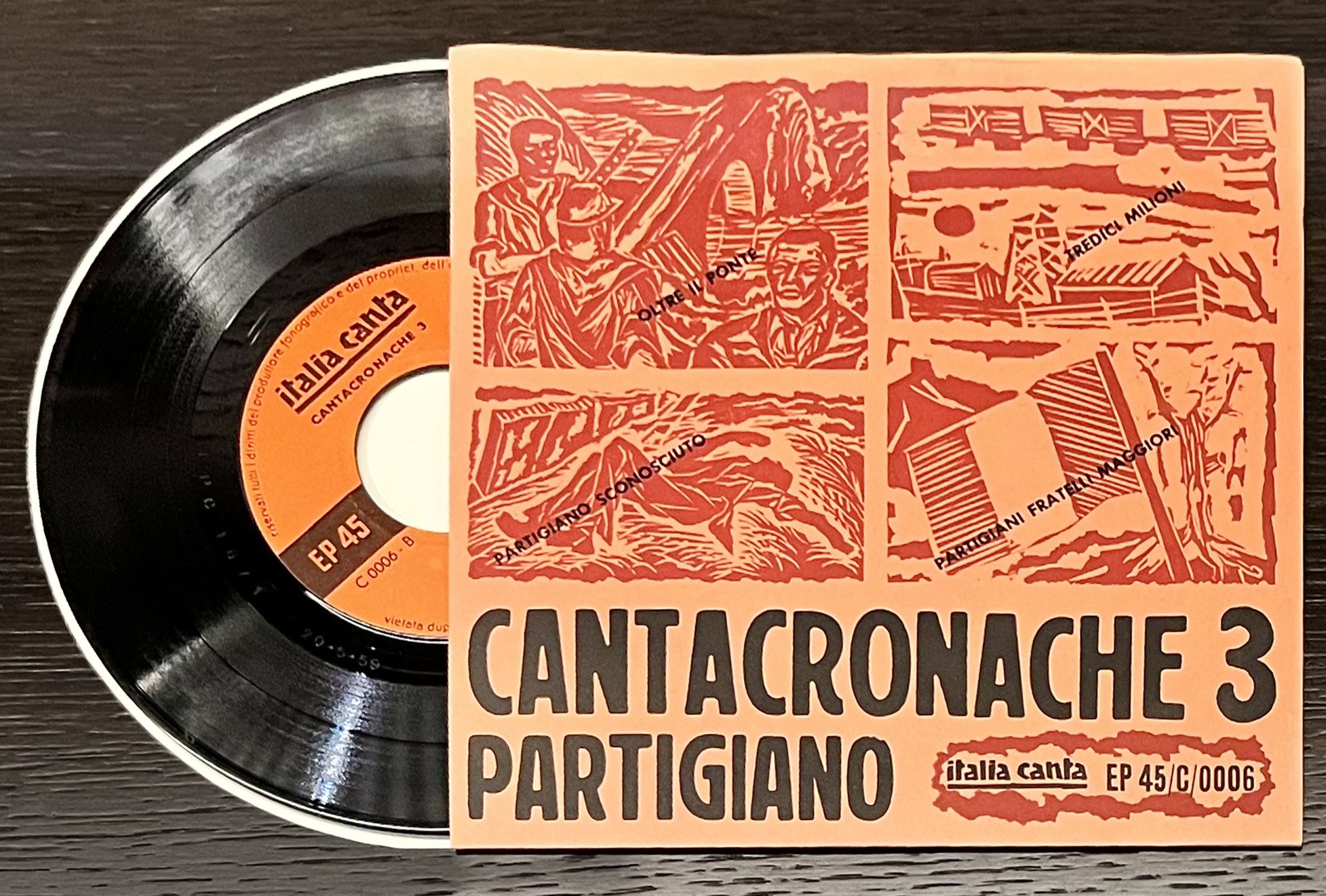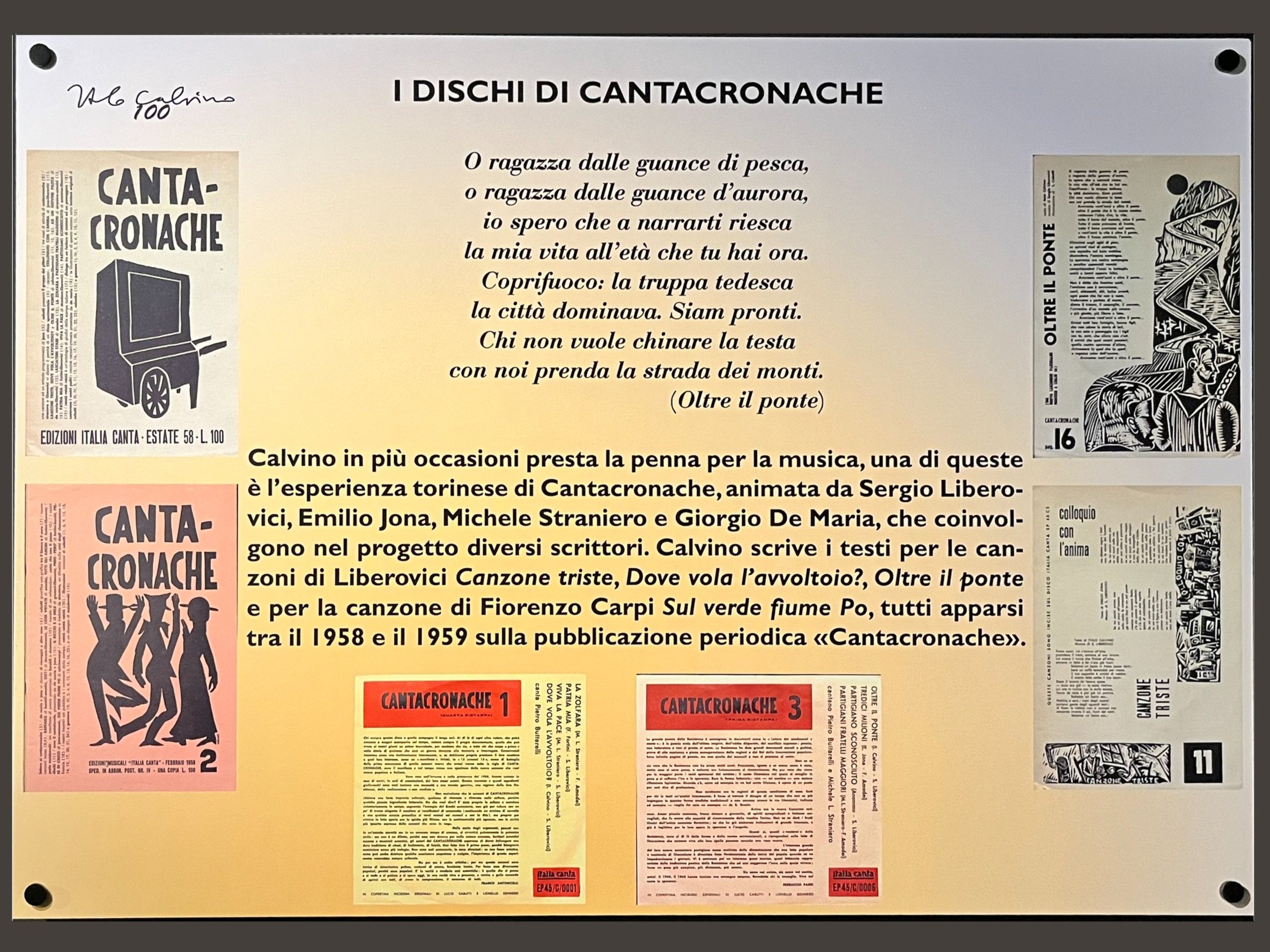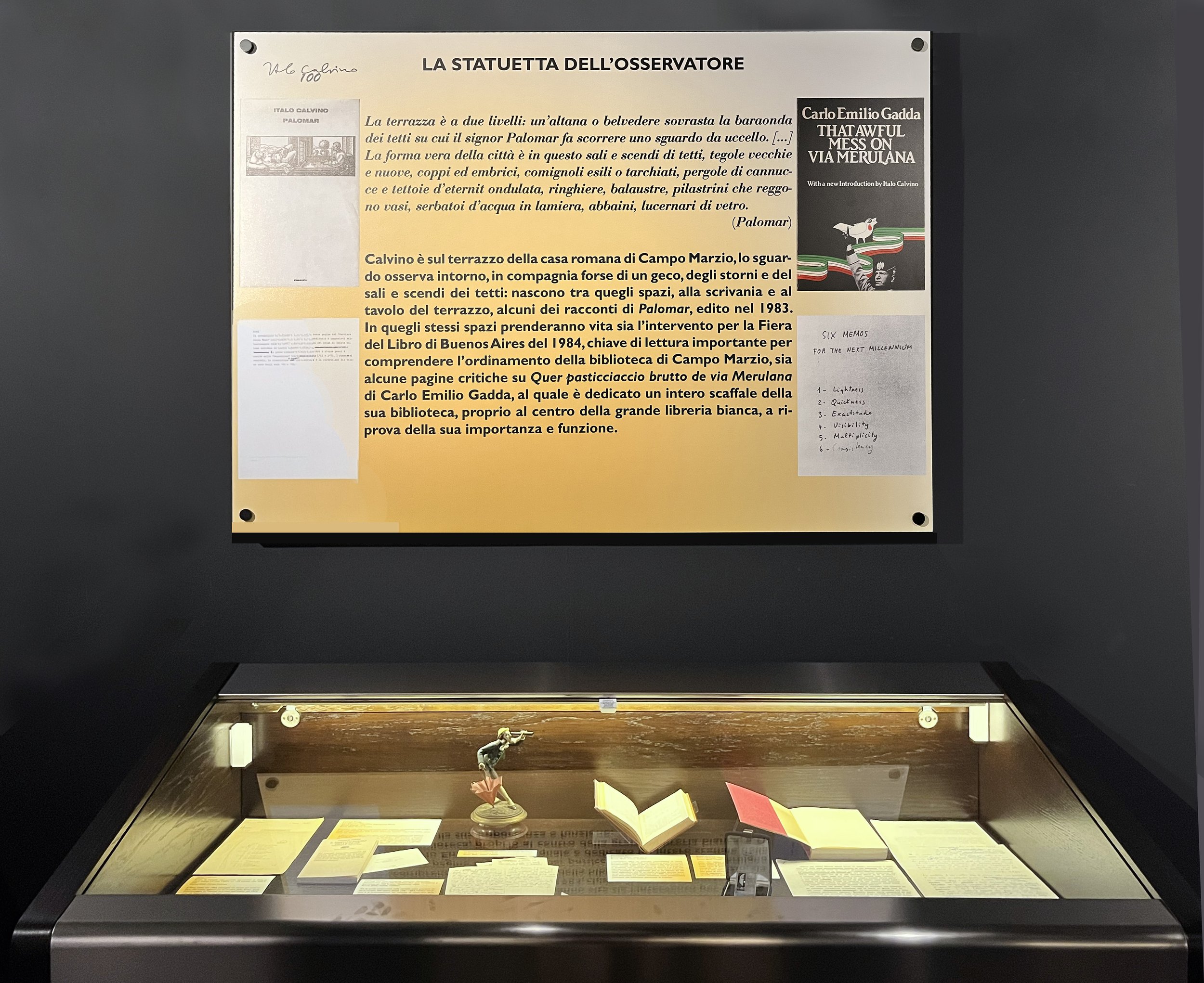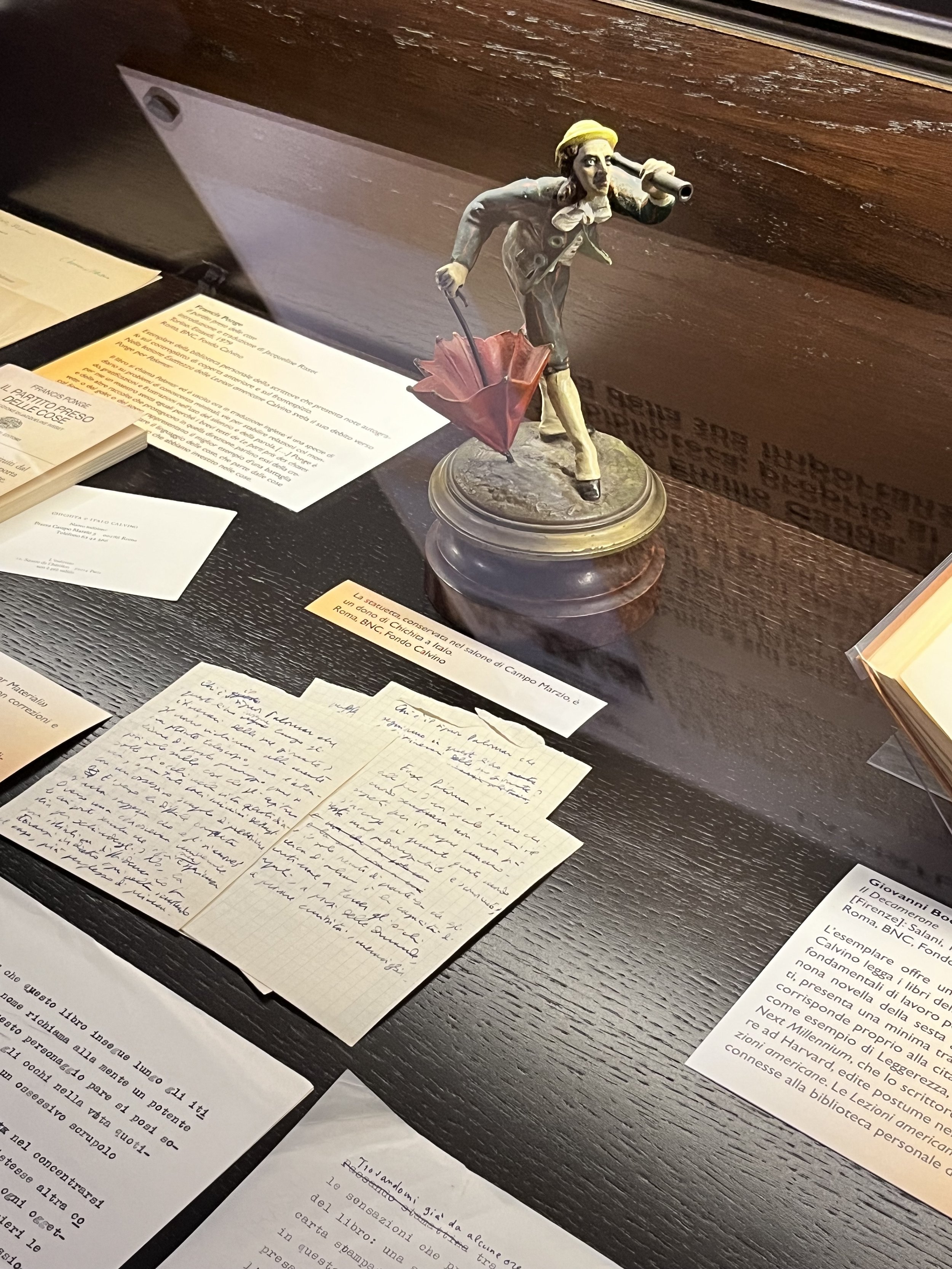Celebrating Italo Calvino on the Centenary of His Birth
Lo sguardo dell’archeologo, Calvino mai visto
Mostra, Biblioteca Nazionale Centrale Roma
18 ottobre 2023 - 26 gennaio 2024
La Biblioteca nazionale centrale di Roma festeggia i 100 anni di Italo Calvino
The Archaeologist’s Gaze: Calvino as Never Seen Before
Exhibition, National Central Library of Rome
18 October 2023 - 26 January 2024
The National Central Library of Rome celebrates the centenary of the birth of Italo Calvino.
On 18 October, the National Central Library of Rome opened a vast and fascinating exhibition celebrating the centenary of the birth of Italian writer and journalist Italo Calvino (15 October 1923 - 19 September 1985), the inauguration marked by talks given by Calvino’s daughter, Giovanna Calvino and the Director of the Library, Stefano Campagnolo, along with a wonderful array of previously unseen material.
The exhibition takes its title from Calvino’s 1972 essay, Lo sguardo dell’archeologo, The Archaeologist’s Gaze, included in his Una pietra sopra, a collection of essays translated into English as The Uses of Literature (1980). According to Calvino, taking on the archaeologist's gaze, as opposed to that of the historian, means avoiding the lure of a teleological interpretation of history by putting oneself instead “dalla parte del fuori, degli oggetti, dei meccanismi, dei linguaggi”, i.e., on the side “of the outside, of objects, of mechanisms, of languages”—to attend to the various elements of a moment as an archeologist attends to “tools whose use is a mystery, shards of pottery that don’t fit together, deposits from eras other than those one would expect to find there.”
To this end, the exhibition, sponsored by the National Committee for the Celebrations of the Centenary of Italo Calvino's Birth, takes place in all the exhibition spaces of the National Library, creating a fluid and cogent itinerary that starts from the Library’s main Exhibition Hall and unfolds across seven sections, each of which revolves around a central thematic artifact from Calvino’s house in Rome, in Piazza di Campo Marzio 5. On display are objects; documents, including handwritten drafts in rough and fine form, notes, and typescripts; and books, including special dedication copies and copies with precious reading traces—previously unseen material that coalesces into a rich and varied image of a “never before seen Calvino.” Curated by Eleonora Cardinale, the exhibition culminates in a reconstruction of Calvino’s study lounge from his home in Piazza di Campo Marzio, presented in the double Sala della Nazionale and complete with original furnishings.
The objects on display come from the author’s personal library and papers now kept at the National Library in Rome, as well as from recent acquisitions of the Library, a number of which Philobiblon has been proud to supply.
Following the first and second sections, devoted to Calvino’s early years in Sanremo and his academic career and political awakening in Turin as represented by a constellation of material surrounding a family photo album and two cartridges fired by the Black Shirts in San Giovanni in 1945, respectively, the third section turns to Calvino’s Our Ancestors trilogy, with material displayed around the governing object of Alexander Calder’s lithograph of the Noble Cavalier.
The allegorical Our Ancestors trilogy is made up of The Cloven Viscount (1952), The Baron in the Trees (1957), and The Nonexistent Knight (1959), which are exhibited here with texts and first editions with dedications. In this section, Philobiblon is proud to have supplied the Library with the first American edition of the Baron in the Trees (1959), presented in an important dedication copy to Vera Frank, who was responsible for helping Calvino correct mistakes from the first edition of the English translation of Il Barone Rampante (London, Collins, 1959). The dedication reads:
'To Vera, who made the Baron climb American trees, with gratitude I.C. NY, Nov 12, 1959’
The fourth section revolves around records of Cantacronache, a Turin-based project that was established in 1958 and brought together authors, poets, intellectuals, and musicians. Calvino was one of the first authors to work on the project and ultimately wrote lyrics for a handful of songs. Here Philobiblon supplied the first three issues of the Review "Cantacronache" along with the first six original EPs.
In the fifth section one finds the tarot cards used by Calvino for The Castle of Crossed Destinies, along with material related to his years in Paris, including the meeting of his future wife Esther Judith Singer, known as Chichita.
The sixth section, meanwhile, features Calvino’s first and final party cards of the PCI (Italian Communist Party), the last of which dates to 1956, when Calvino left the PCI in response to the Soviet invasion of Hungary. Here Philobiblon supplied an unpublished typescript of the important political article Il Sorpasso [1976]—rejected by the New York Review of Books—which comes from the collection of Calvino’s translator William Weaver.
The seventh section entails a look at Rome developed around Calvino’s charming statuette of an observer, (‘the gaze on Rome’), and is dedicated to Palomar with preparatory material and print proofs, as well as Calvino’s writings for the Lezioni americane and on Carlo Emilio Gadda. As representative of the latter, Philobiblon is pleased to have supplied Typescript 1984, a critical essay on Gadda that was used as an introduction for the first English translation of Gadda’s work, That Awful Mess on Via Merulana (New York, Brazier, 1984).
Finally, in addition to the above, Philobiblon is also proud to have supplied the Library with the typescript of La Glaciazione [1975], a short novel written for the Suntory distillery in Japan which asked the most famous writers of the day to contribute texts in celebration of their 50 years of activity. Coupled with the typescript is an hors commerce volume of A Treasury of Drinking Pleasure (1976), where La Glaciazione was first published.
These are but some of the many treasures on display now at the National Central Library of Rome, whose wonderful exhibition will run until 26 January 2024. Open to all, it presents a unique opportunity to don one’s own archeologist’s gaze and discover a previously unseen version of the remarkable Italo Calvino.














